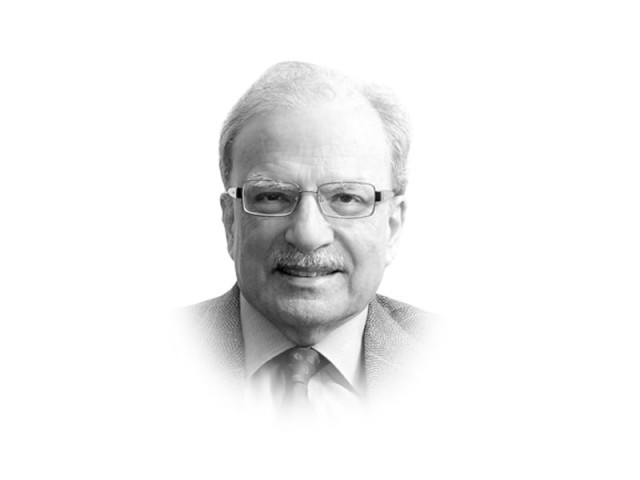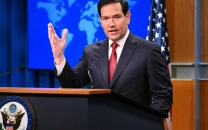Rising Lahore and recovering Pakistan
Lahore must respond to different impulses and determine its economy itself during the early phases of urbanisation.

The writer is a former caretaker finance minister and has served as vice-president at the World Bank
The same can be said about a number of cities close to Pakistan. Dubai has already risen and in spite of the recent recession, the city looks forward to a future in which it will play an important part in the development of Asia and the Middle East. Doha, the capital of Qatar, is rising and the pace will pick as it prepares for the 2020 World Cup contest. Qatar has an airline that has aggressively linked various parts of the globe. Doha will soon have what is already being advertised as the world’s most modern airport. In fact, the failure of the Pakistani city to keep pace with the rapidly changing world has made the country a poor appendage of the Middle East. Nothing illustrates this more than the way Pakistan is now connected with the world. To go to any destination in the West, Pakistanis must either take their own rapidly crumbling national carrier, Pakistan International Airlines or they must pass through one of the hubs in the Middle East. A country must rely on its urban areas to guide its economic, political and social development. These tasks cannot be transferred to locales outside the country’s borders. The urban Middle East can serve Pakistan’s needs only in limited ways. The city, or, perhaps more accurately, the cluster of cities, that can play this role is Lahore and its urban hinterland.
Until very recently, development economists and development agencies favoured rural resurgence as the driver of growth, paying scant attention to the development of cities for bringing about economic change. The Planning Commission, under the stewardship of its previous Deputy Chairman, sought to change that orientation by bringing city development at the heart of what it called the ‘framework of economic growth’. It correctly argued that for Pakistan to move forward it had to cast aside the old model of development and place focus on a number of new priorities. The old model, said the Planning Commission, placed emphasis on the Public Sector Development Program (PSDP) and had it become the driver of growth and instigator of economic change. The PSDP itself focused on brick and mortar growth rather than what the Commission called the “soft side of development.” In arguing for a new growth paradigm, it wished to give opportunity to the private sector to develop the country’s cities and turn them into the main source of economic dynamism. The Commission also emphasised the development of the country’s large human resource by preparing it for a modernising economy. Such human resource development can only be done within cities, especially when they have clusters of institutions that can interact with one another. This has begun to happen in Lahore more than in other large cities of the country.
The Planning Commission also pointed out that in the past, archaic laws and misplaced public sector development priorities created “flat cities”. How flat the large cities of Pakistan are can be seen from the aeroplane when it comes in to land at one of the major airports in the country. Lahore — and to some extent Karachi also — has no prominent buildings that stick out beyond the flat cityscape. This low-rise development has placed an enormous burden on the city’s infrastructure as it expands horizontally rather than vertically. It will take a significant change in zoning laws and an equally significant change in land prices to change this pattern of city growth. This can be done by heavily taxing space in the city centers of Lahore and other large cities. Expensive land will encourage investors to build so that new structures will rise well above the ground level.
Lahore has one distinct advantage over Karachi although the latter has a much larger population. It is at the center of Pakistan’s most dynamic urban area. Lahore and the cities within a radius of 30 miles have a combined population of 40 million people. This means a population density of some 200,000 people per square mile in this space. What is also interesting that is that these people are occupied with a number of diverse activities, which means that there is a great deal of internal commerce within this area of 200 square miles. Lahore’s immediate neighborhood, therefore, is not rural but largely urban. Rather than have the city’s economy be determined by the needs of the countryside as happens during the early phases of urbanisation, Lahore must respond to different impulses. These will be produced by Lahore itself and also by the urban areas around its periphery.
Published in The Express Tribune, July 29th, 2013.
Like Opinion & Editorial on Facebook, follow @ETOpEd on Twitter to receive all updates on all our daily pieces.















COMMENTS
Comments are moderated and generally will be posted if they are on-topic and not abusive.
For more information, please see our Comments FAQ